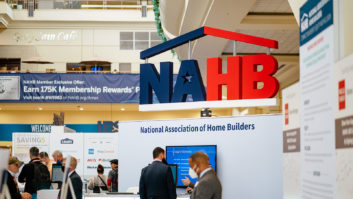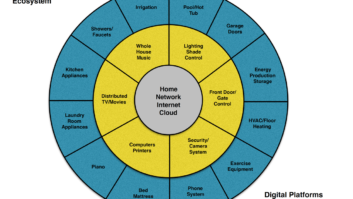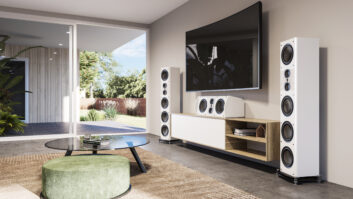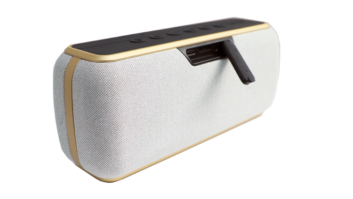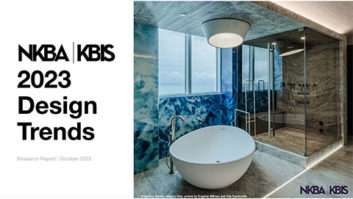As proof of the pace of innovation in the world in which we now live, Eureka Park, the section of this year’s International CES dedicated to start-up technology companies almost doubled in size from last year’s show, to 900 participants from all over the world. Many of these start ups have developed innovative technologies for the smart home market–such as the AI-empowered HVAC registers and sensors from Hibersense (see www.hibersense.com.) But, evidence of the rapid pace of innovation was not restricted to Eureka Park. The world’s largest electronic companies–Samsung, Sony, Panasonic, Haier, LG, and Whirlpool–showcased a plethora of innovations in ultra show throw projectors, thin and even rollable OLED screen TVs, and the latest generation of smart appliances for the kitchen and the laundry room. Established consumer brands in the home, such as Kohler and Moen, also demonstrated their next-generation smart home intelligent products for the bathroom.

It’s normal for all of us in the residential custom electronics industry to focus on the innovations being made in audio and video technologies for our client base, since they will have an immediate and direct impact on our design and the product specifications for this year. What is less obvious is the affect that other smart connected devices in other rooms of the home–specifically the kitchen and bath–will have on the residential custom electronics integrator.
In my opinion, one of the more impressive examples of intelligent, connected home bath solutions was demonstrated in Kohler’s Kohler Konnect exhibit in the Smart Home section of the Sands convention center. Kohler showcased its voice- and app-controlled shower, faucets, and a new line of high tech toilets. These new connected home products are relevant to the custom electronics integration professional for several reasons. First, they are supported by a major recognized brand name in the kitchen and bath market. They will require up-front custom design work to make sure that the plumbing and wireless networking infrastructure is installed properly to enable these new technologies. They can be controlled by the voice and home control systems that custom integrators now install. And, they are products primarily intended for the luxury home market; the Kohler intelligent shower will sell for $3,000 or more depending on the range of options installed. These are certainly not in the category of do-it-yourself products.
While many of these products will typically be resold through existing kitchen and bath channels it is also clear that these companies may be looking at the CEDIA custom installation channel as a potential integration partner. These sophisticated network connected products will require the support of a residential electronics integration partner, an expertise that is often beyond that of the plumber or the retail channel of kitchen and bath products. The purchase of the CEDIA Expo show by Emerald Expositions (owners of the kitchen and bath show) is a clear indicator of the potential extension of our home technology expertise into these two areas of the home.
In our own cyberManor showroom we have been demonstrating the valveless U by Moen shower (see www.moen.com), which is an intelligent hot and cold mixing valve product that allows the homeowner to specify the exact temperature they like for their shower from an app on their phone. And coming this spring Moen will launch its Alexa app, which will allow the homeowner to wake up and ask Alexa to turn on the shower to their desired temperature. We have now become the home technology showroom for several plumbers in our area and have discovered that customers looking to purchase a smart, connected shower system are also inclined to purchase high end audio/video systems, lighting control systems, and security systems. When clients visit our high tech master bathroom showroom they also see app and voice controlled motorized window treatments, lighting control, heated floor, and vanishing TV vanity solutions–all part of our integrated smart home experience center.
In the kitchen and laundry room, we see a similar trend of connected appliance innovation. Samsung is now on its third-generation connected refrigerator line, and Whirlpool had a large exhibit in the Smart Home pavilion showcasing its full line of connected refrigerator, microwave, stove, oven, and washer/dryer products. All of these connected products require integration with the home’s wireless networks, voice-enabled assistants from Google and Amazon, and integration with online product purchase services such as Amazon and Instacart.
We’re really talking about computers that provide washing, refrigeration, and cooking services. As computers, they now require periodic firmware upgrades to provide product upgrades and secure them from security breaches. These products all represent the high end of these appliance lines, and each year they get more sophisticated. The new Samsung and LG smart refrigerator have large computer display panels on one of the refrigerator doors that include apps for shopping, calendars, music, home control, white board, messaging, front door cameras, and more. Who is going to set up and maintain the home technology infrastructure controlled by these apps for the affluent homeowners that are purchasing these smart home appliances? Most likely it won’t be the sales or service personnel at big-box retailers.
Increasingly, this is an opportunity for our custom electronics integration channel to expand our expertise and support into the two most frequently used rooms in the home: the kitchen and the bathroom.
